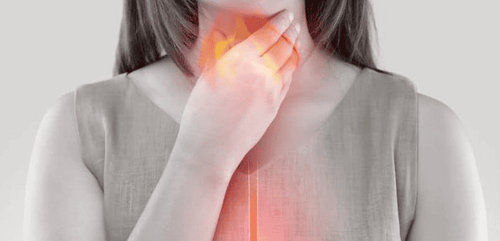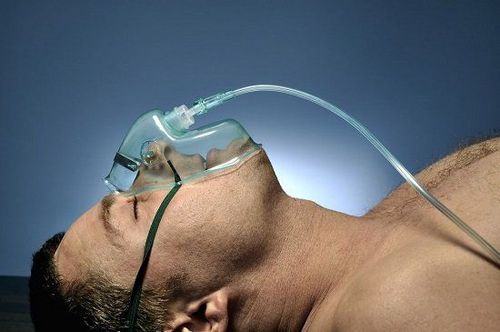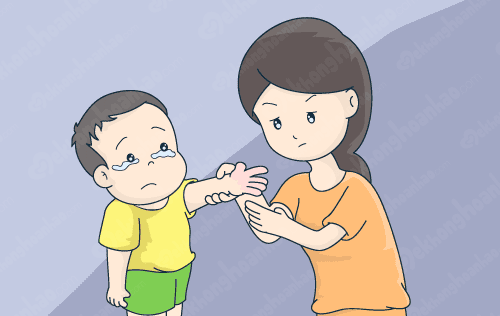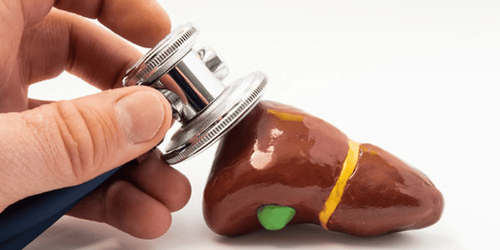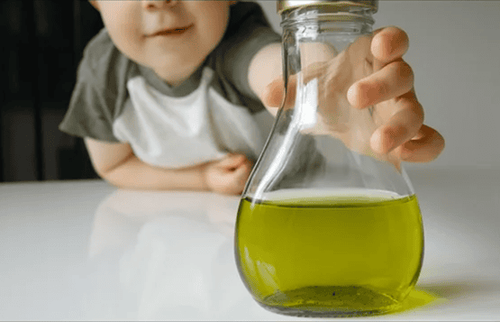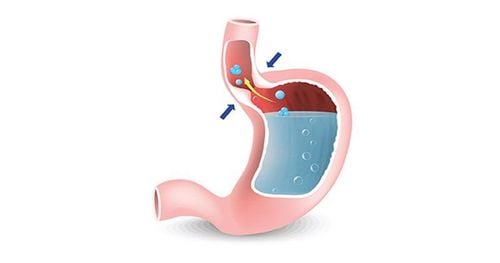This is an automatically translated article.
The article is professionally consulted by Master, Doctor Vu Huu Thang - Emergency Resuscitation Doctor - Emergency Resuscitation Department - Vinmec Ha Long International General Hospital. The doctor has nearly 10 years of experience in Emergency Resuscitation.Chemical burns to the esophagus are injuries that can occur in both adults and children due to ingestion or ingestion of chemicals that burn the esophagus. So is chemical esophageal burn dangerous and what complications can it leave?
1. Overview of chemical burns of the esophagus
Chemical esophagitis is damage to the esophagus that can occur in both adults and children due to ingestion of chemicals such as hydrochloric acid (used in mirror coating), sulfuric acid (used in the manufacture of batteries and accumulators). , bases such as Javel detergent, caustic soda, etc. In terms of damage, acids cause burns in the superficial layers of tissues, while bases cause burns in deeper tissues.2. Is chemical burns of the esophagus dangerous?
Chemical burns of the esophagus are common and very dangerous injuries, because if not treated promptly, they can lead to death or leave scars in the esophagus, affecting eating and drinking, and causing muscle exhaustion. body.After drinking, swallowing chemicals, depending on the dose and concentration, will cause damage from mild to severe. If mild, the patient will initially feel a burning sensation, burning from the mouth, lips, tongue, and throat. At this time, if timely emergency treatment properly can avoid the sequelae of scarring left by esophageal burns.
In severe cases, the patient can be poisoned, shocked, stunned and eventually die due to complications such as esophageal perforation, mediastinitis, electrolyte imbalance causing gastrointestinal bleeding, ..
.
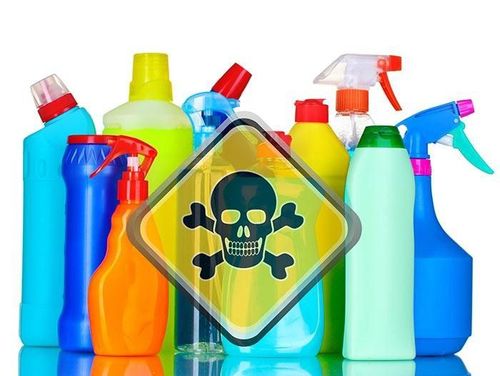
3. Manifestations of esophageal burns due to chemicals
After ingesting chemicals, depending on the dose, concentration as well as the type of chemical (acid or base), esophageal burns will manifest in 3 stages with different levels and durations.3.1. Stage of acute esophageal burn This stage lasts from 1 to 2 weeks and is divided into 3 specific periods as follows:
Shock period : (occurs in the first few hours after taking chemicals): In the period In this case, the patient will feel pain, panic, fear, mental confusion and these are the causes of dizziness. This period, if detected and treated properly in time, can help ensure the patient's life.
Pain: After drinking chemicals that burn the esophagus, the patient will feel severe pain from the mouth, throat to the esophagus, neck, chest, epigastrium and stomach. The degree of pain can range from mild to severe, especially sharp pain in the chest and gradually increasing when swallowing, coughing, and speaking, it may be a sign of perforation of the esophagus or the stomach. Acid-base disorders: Concentrations of ingested chemicals will cause acid-base disturbances in the blood to varying degrees, which, if severe, can make patients dizzy. Ulcer period: (occurs 2-3 days after taking chemicals): In this period, esophageal burns can cause fever due to superinfection, the pain level increases gradually and makes the patient unable to eat or drink because pain when swallowing. In addition, there are other manifestations such as bad breath, sour breath, coughing up blood or white mucous membranes.
Recovery period: (occurs 6 - 10 days after taking chemicals): Depending on the type and concentration of chemicals ingested, it can cause superficial or deep esophageal burns, from which there will be different recovery times . This is called the recovery period because the symptoms of the disease gradually decrease such as fever and pain subside, the patient can eat and drink, his physical condition is better, and the sores begin to heal.
In the acute stage, the patient needs to be treated with emergency care properly so as not to affect his life and avoid leaving sequelae.
3.2. Intermediate esophageal burn phase This stage usually lasts from 3 to 6 weeks and is the transition from acute to chronic. This is also known as the pseudo-disease phase, because the symptoms of esophageal burns disappear such as fever, pain, and eating. However, in fact, this is the stage of scarring that is forming in the esophagus and causing symptoms of choking in the next stage.
3.3. The stage of esophageal burns forming narrow scars The main manifestation of this stage when the scars form is the gradually increasing symptoms of choking, the patient cannot swallow food from solid to liquid, even scarring causes narrowing of the esophagus. Food stagnates and causes vomiting after eating.
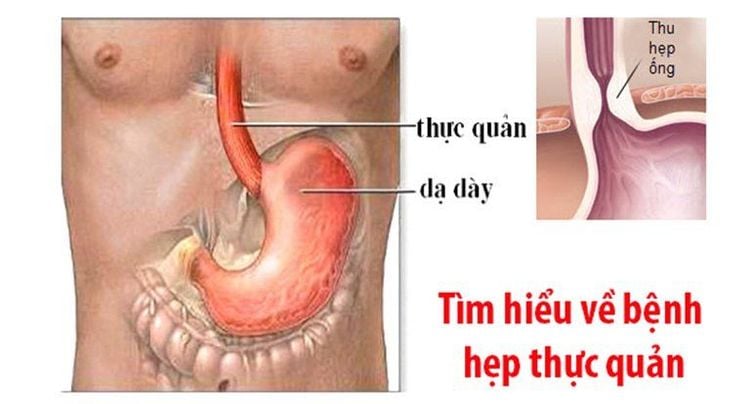
4. Diagnosis of chemical burns of the esophagus
To diagnose and evaluate the condition and extent of chemical burns of the esophagus, it is necessary to conduct:Esophageal endoscopy : Esophageal endoscopy allows assessment of the location and extent of damage to the esophagus. However, it should be noted that endoscopy can increase the extent of esophageal damage and can cause complications, especially during ulceration, leading to esophageal perforation. Esophageal endoscopy was performed at the second, intermediate stage. X-ray: Contrast X-ray of the esophagus also allows to determine the location and condition of the esophagus damaged, scarred narrowing or perforation of the esophagus. However, it should be noted, if the esophageal burn punctures the esophagus, avoid using heavy or unabsorbed contrast material because it can stagnate and affect the mediastinum and lungs.
5. Treatment of esophageal burns caused by chemicals
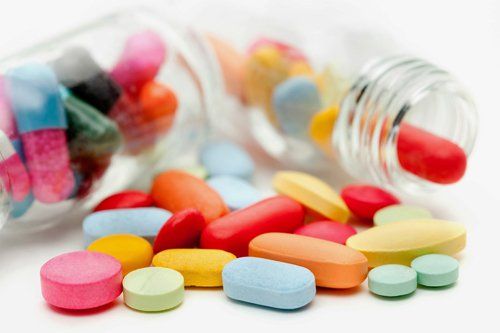
Emergency treatment in the first hours after taking chemicals includes:
Prevention and control of shock: Use non-morphine analgesics, intravenous fluids to balance acid-base, use of cardiac stimulants, sedatives (if any disturbances occur). panic, stress, panic). Acid-base balance: Use antagonists or neutralizers. However, caution should be exercised in gastric lavage because it may injure or cause complications. Prevent superinfection: Prevent superinfection due to esophageal burns by using antibiotics early and in the long term, using broad-spectrum antibiotics. Monitor and detect cases of esophageal perforation, or gastric perforation: Esophageal or gastric perforation can appear as late as a few days later, especially during the ulcer period. Nutrition: It is necessary to ensure nutrition for the patient to quickly recover from ulcer lesions. Depending on the condition and extent of the injury to conduct early esophageal catheterization, which helps prevent esophageal adhesions. However, care should be taken to avoid catheterization in the period of esophageal burns caused by chemicals that cause ulcers because it can lead to complications of esophageal perforation. In case of necessity, a nasogastric tube may be placed to infuse nutrition for the patient. Prevention of narrowing of the esophagus: When a scar forms, it can narrow the esophagus. Therefore, patients need to be detected and treated early. After the initial steps of treatment, depending on the extent of the damage, there will be an appropriate chemical treatment regimen for esophageal burns:
Corticosteroid treatment: Corticosteroids should be used early and for a long time to inhibit the fibroblasts and fibrous organization. However, it is necessary to note the complications of using corticosteroids such as damage to the gastric mucosa. Esophageal dilation: Endoscopy is a modern technique that allows detection, prevention and treatment of narrow scars caused by esophageal burns. Anastomosis surgery, surgical treatment: In case the scar is formed and the treatment with esophagectomy is not effective, the patient may be indicated for surgical treatment with esophagectomy or replacement surgery. replace the esophagus with the intestine. Esophageal burns due to chemicals are very dangerous and can be fatal if not detected in time and treated properly. Treatment of esophageal burns can also be difficult, especially when the scarring caused by the burn can narrow the esophagus.
Vinmec International General Hospital is the address for examination, treatment and prevention of diseases. When performing the examination process at Vinmec, customers will be welcomed and used modern facilities and equipment along with perfect medical services under the guidance and advice of experts. Good doctors, well-trained both at home and abroad.
Please dial HOTLINE for more information or register for an appointment HERE. Download MyVinmec app to make appointments faster and to manage your bookings easily.





